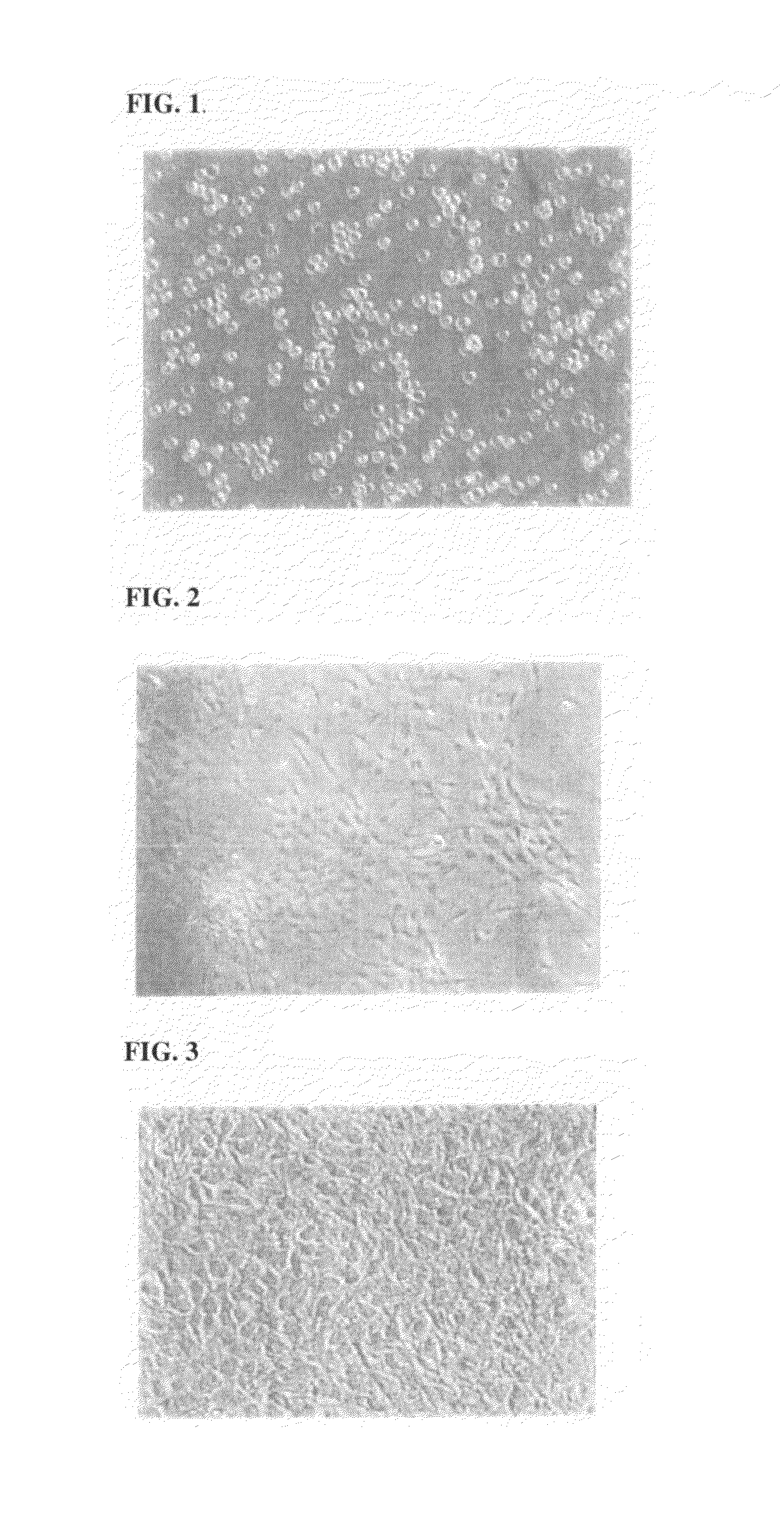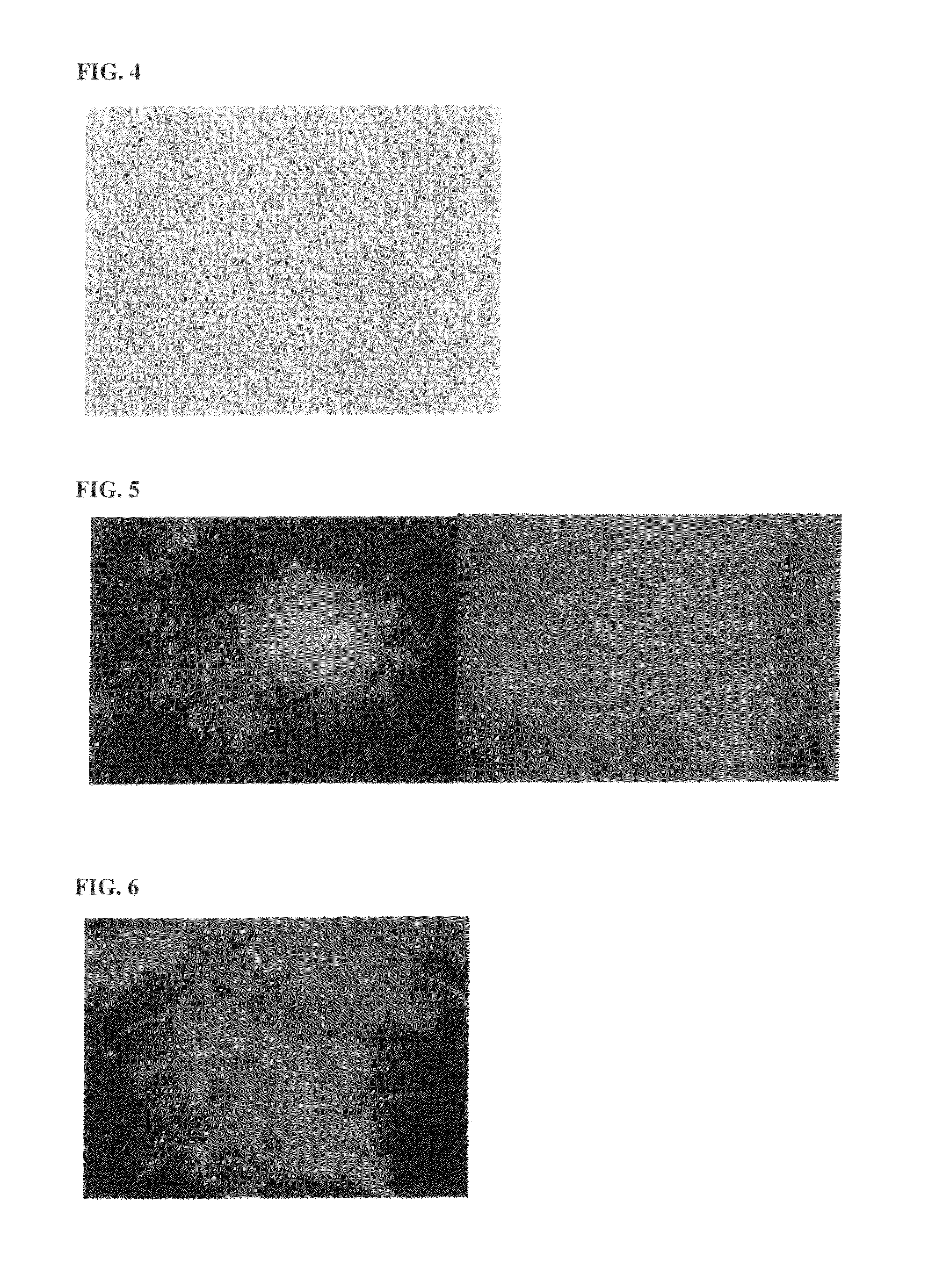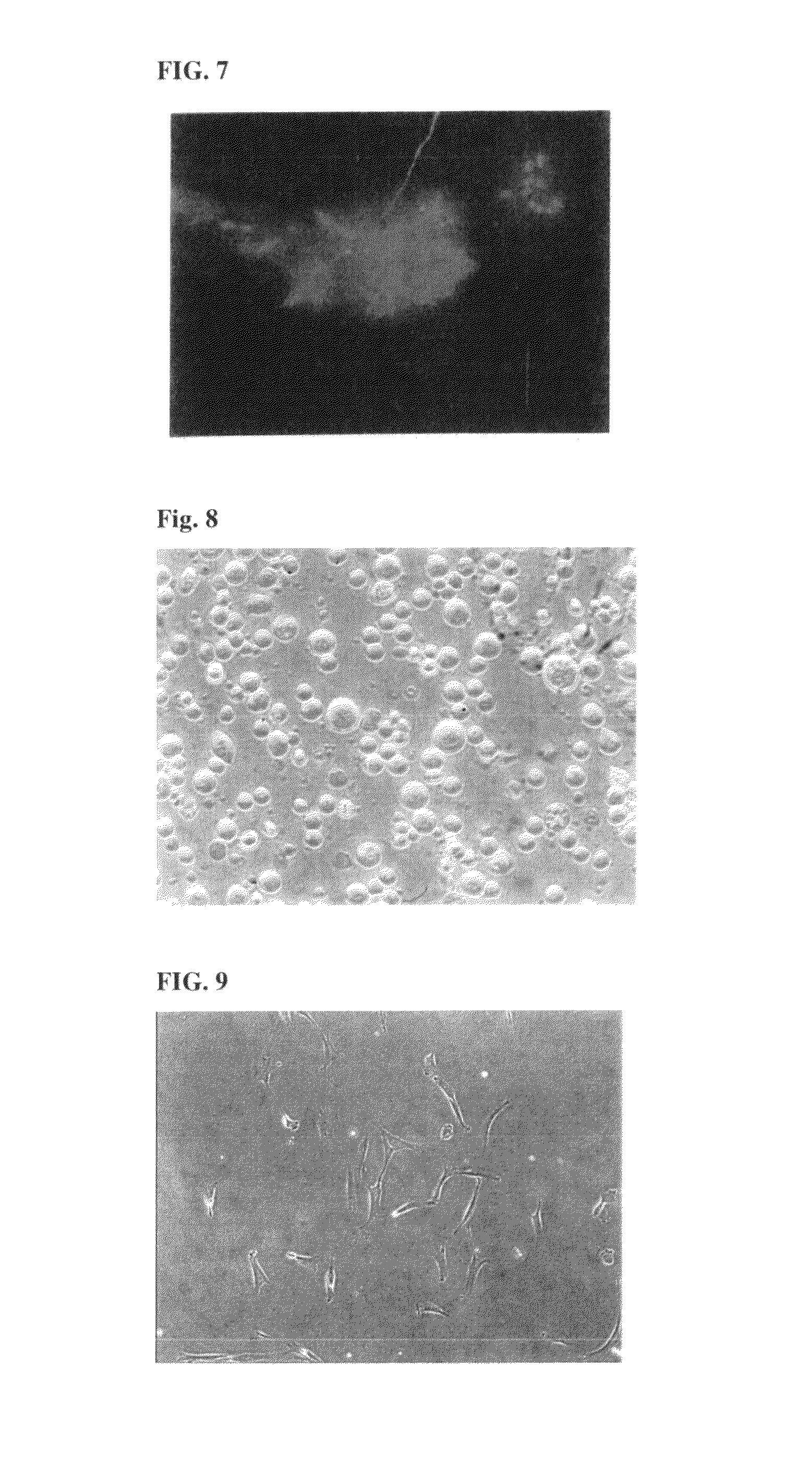Stem cell therapy for the treatment of diabetic retinopathy and diabetic optic neuropathy
a technology of optic nerve and stem cell therapy, which is applied in the field of stem cell therapy for the treatment of diabetic optic nerve and diabetic retinopathy, can solve the problems of progressive deterioration of vision, loss of photoreceptors, and abnormal blood vessel formation
- Summary
- Abstract
- Description
- Claims
- Application Information
AI Technical Summary
Benefits of technology
Problems solved by technology
Method used
Image
Examples
example 1
Preparation of Multipotent Mesenchymal Stromal Cells (MMSC) from Human Bone Marrow
1. Characteristics and Transport of the Donor Material
[0074]The source for the preparation of human MMSC was a bone marrow suspension (BMS) obtained by puncture of the iliac crest.
[0075]The mandatory clinical, laboratory, and instrumental examinations of the patient (for autotransplantation) were performed, including:
[0076]1. The filling out of the medical history with an attachment of copies of all discharges from the medical history during previous stages of treatment and examination
[0077]2. Complete clinical blood tests
[0078]3. Complete blood biochemistry panel, with determination of renin, aldosterone, and brain natriuretic peptide
[0079]4. Blood group, Rhesus factor
[0080]5. Blood test for HIV and Wasserman test
[0081]6. Blood test for hepatitis B and C markers
[0082]7. Complete immune status
[0083]8. Chest x-ray
[0084]9. Ultrasound of abdominal organs, kidneys
[0085]10. ECG, Halter monitoring
[0086]11. E...
example 2
Immunophenotyping MMSCs
[0153]Probe Preparation. Cells suspended in PBS at concentration 1×103 cells / ml, fixed in 1% of methanol at 4° C. for 10 min, after this they were washed. Non-specific binding was blocked by incubation in 1% BSA and 0.1% goat serum for 1 hour at room temperature. After this, cells were washed in triple volume of PBS, centrifuged and the pellet suspended in 0.5% primary antibodies solution.
[0154]After incubation, cells were washed in PBS for 40 min. The mouse antibodies used were manufactured by Santa Cruz Biotechnology and Chemicon. As a negative control, nonspecific mouse antibodies were used. The incubation with anti-mouse antibodies, marked with FITC and PE was performed for 20 min. After this, cells were washed in PBS in volume of 1 ml and analyzed using FACS Caliber (BD Biosciences).
Results
[0155]Marker Positive cells (%)
[0156]HLA-ABS-24.9
[0157]HLA-DR 0.7
[0158]CD34-0.29
[0159]CD45-0.76
[0160]CD44-78.4
[0161]CD90-85.7
[0162]CD105-60.5
[0163]Vimentin-96.6
[0164]F(...
example 3
Functional Description of MMSC
[0165]The functional activity of a MMSC culture was evaluated through the ability of the cells to differentiate into mesodermal cell lines (adipose geneses, osteogeneses, chondrogeneses, and miogeneses), under standard conditions, described for differentiating of mesenhymal stem cells, derived from bone marrow (DiGirolamo C. M., Stokes D., Colter D. C. et al. Br. J. Hematol. 1999, 107, 275-281; Sekiya I., Larson B., Smith J. et al. Stem Cells, 2002, 20, 530-541). FIG. 1 presents results obtained for the differentiation experiments.
PUM
| Property | Measurement | Unit |
|---|---|---|
| temperature | aaaaa | aaaaa |
| diameter | aaaaa | aaaaa |
| volume | aaaaa | aaaaa |
Abstract
Description
Claims
Application Information
 Login to View More
Login to View More - R&D
- Intellectual Property
- Life Sciences
- Materials
- Tech Scout
- Unparalleled Data Quality
- Higher Quality Content
- 60% Fewer Hallucinations
Browse by: Latest US Patents, China's latest patents, Technical Efficacy Thesaurus, Application Domain, Technology Topic, Popular Technical Reports.
© 2025 PatSnap. All rights reserved.Legal|Privacy policy|Modern Slavery Act Transparency Statement|Sitemap|About US| Contact US: help@patsnap.com



